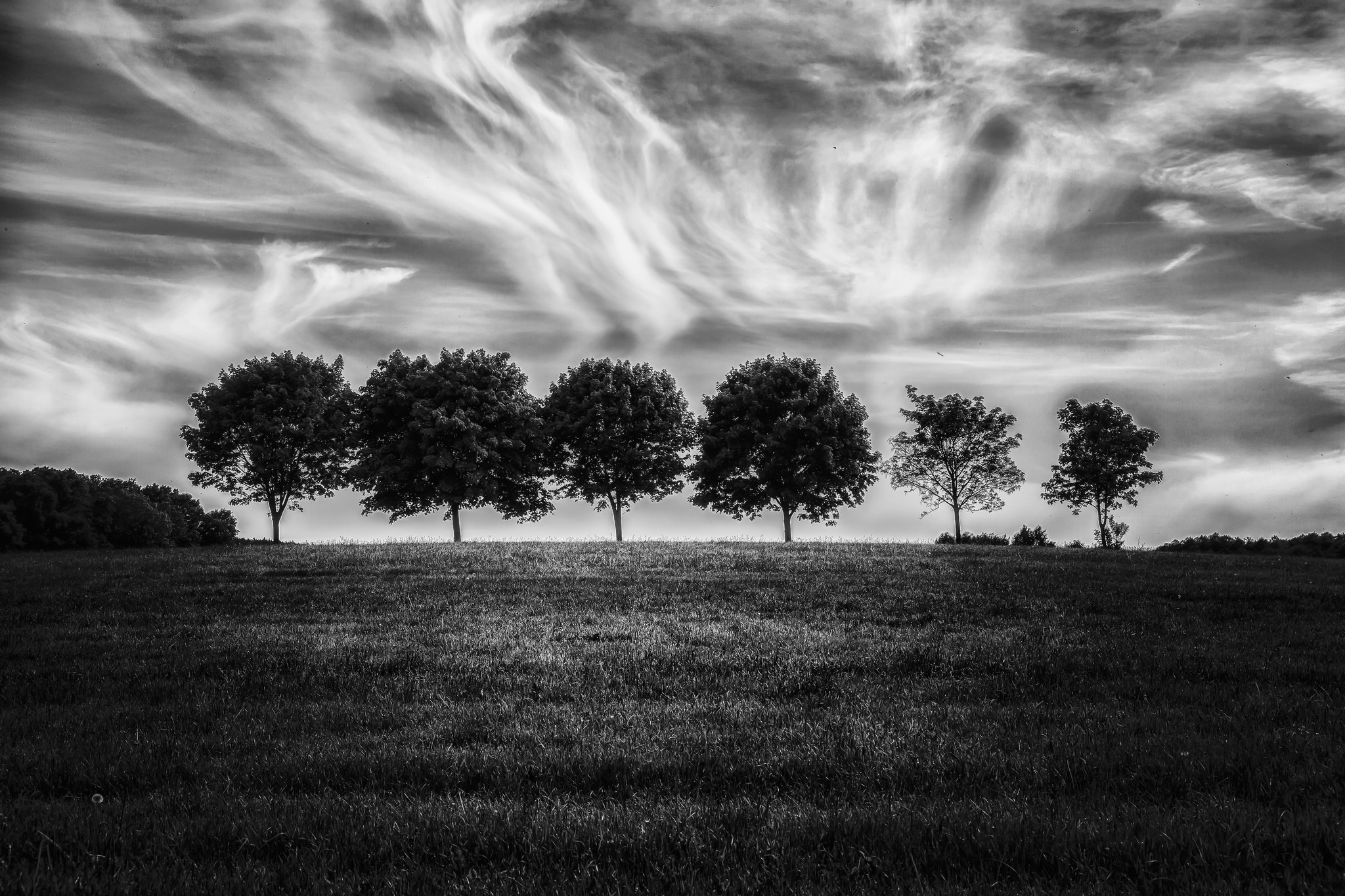Modern cameras allow us to capture incredible, colourful landscape images. A quick look through sites like 500px will show amazing examples of the genre. However, when someone posts a stunning black and white landscape, it very often gets more likes and comments than a colour based equivalent. Black and white landscapes appeal to our most basic photographic desires. Their lack of colour as a compositional and emotive trigger means that we appreciate how much thought and creativity has gone into a great monochrome landscape. Great black and white landscapes are not easy to produce, they require forethought, a great understanding of light and form and good knowledge of exposure. Today we are going to take a look at the elements that make a great black and white landscape.
How Strong Colour and Geometric Definition Can Help a Photo Stand Out
It might seem odd to mention colour when talking about monochrome but it is vital to the way we shoot. Colour is one of the ways we separate objects in black and white images so we are looking for great colour contrast in our shots.
Along with colour we also need well defined geometrical shapes. These provide hard contrast edges to our image and work as compositional tools to hold the shot together. A good combination of well-separated colours and strong geometric shapes will provide definition to a good monochrome landscape.

This is Why Patterns and Texture Are Important in Black and White Photography
Two other important elements to any black and white landscape are patterns and textures. These provide depth to our image, giving the two dimensional a 3D feel. Patterns might be different crops in a field, different rock strata even the shape of a road as it winds across a landscape. Textures tend to be visible on closer elements in our scene. They might be rust on an old tractor or the abrasive surface of a rock. Soft directional light is best for highlighting both patterns and textures.

Why Skies and Clouds Can Make or Break a Landscape Image
The sky is an important element in many landscapes and in particular monochromatic ones. A well-defined sky holds our eye in the picture, returning it to the main interest, the landscape below. A flat uninteresting sky will allow our eye, and our interest to wander off the top of the image. Clouds are what make the sky. It could be fluffy white clouds on deep blue or multi-toned stormy clouds with lots of shape and form to them. Even high-level cirrus can help keep our eye on the landscape. Keeping definition in the sky is an internal part of the exposure and we shall look at that now.

Understanding Exposure, Filters, and HDR for Better Results
Exposure is one of the toughest things to get right in a monochromatic landscape. We need the subject to be well defined and lit but also need definition in shadow regions and to avoid blowing the sky. Ansel Adams devised the zone system for this problem and today most cameras use a digital version of his system with metric metering. Matrix metering is good but it is not always right. For a landscape, often spot metering is the best option. You can meter for your main subject matter and compensate as required.
Often the biggest exposure issue will be maintaining detail in the sky whilst having the correct exposure on the subject. We have a couple of options to help overcome this. Firstly we can shot an exposure bracket and merge this as an HDR in post production. This works well most of the time but on windy days, issues can be seen in leaves and grass.
The other option is to use graduated ND filters to hold back the sky, maintaining the foreground.

Why Post Production is So Important for Black and White Landscape Photography
Post production is as important to digital black and white as printing was to film. Apps such as Lightroom and Photoshop have a plethora of different tools for black and white conversion but probably the most important are the ones that control colour. These sliders allow us to change the contrast and levels of individual colours and tailor the image to what we want.
For example, by reducing levels on the blue channel we can make a blue sky look a much darker tone. Similarly raising levels on the green channel will brighten the tone of grass and foliage. Combining the colour tools with selective masking we can fine tune any black and white image into something stunning.
Monochrome landscapes are not easy to shoot, but by appreciating how colours become tones and shapes and patterns define a shot, you can soon start to “see” in black and white. Patience, good light and of course a beautiful scene are also elements that will go into a great black and white landscape.





2 Comments
Jason,
Very informative and interesting article. Gives me inf on how to create better
B & W images.
Thank you very much.
Pura Vida from Costa Rica!
Very useful advice – thank you